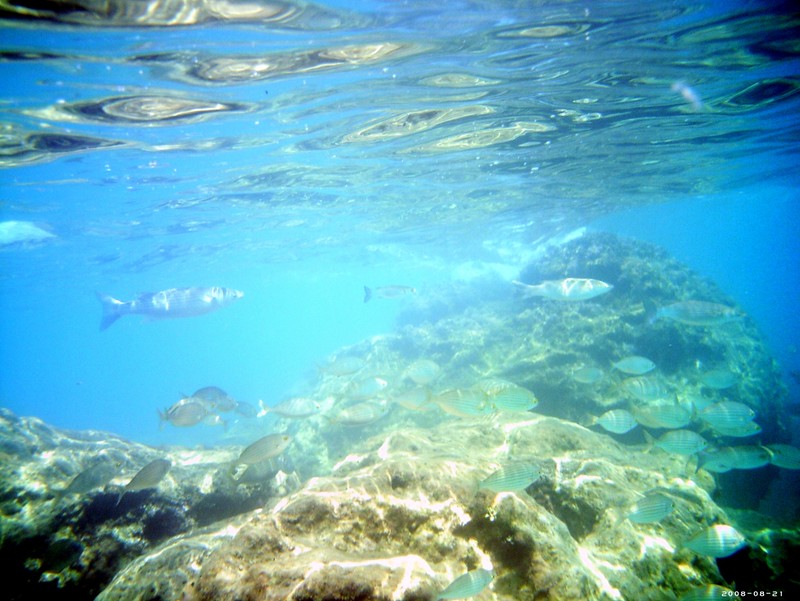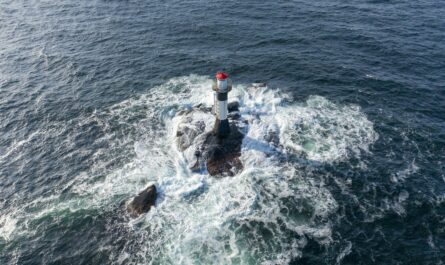The Atlantic Ocean, with its rich biodiversity and intricate ecosystems, has been a focal point of marine exploration for centuries. While much of the Atlantic’s surface is well-charted, its hidden depths remain a realm of mystery and scientific wonder. Among its most intriguing features are the deep-sea trenches—steep, narrow valleys that plunge into the dark, cold abyss, reaching some of the greatest depths on Earth. The Puerto Rico Trench stands out as the deepest point in the Atlantic, but it is not the only trench that harbors secrets of deep-sea life and geological phenomena.
This article takes an in-depth look at the fascinating world of the Atlantic’s deep-sea trenches, exploring their formation, unique environments, and the marine life that manages to survive in such extreme conditions. We’ll focus on the Puerto Rico Trench, delve into other lesser-known trenches, and highlight the scientific importance of studying these underwater valleys.
What Are Deep-Sea Trenches?
Deep-sea trenches are long, narrow depressions on the ocean floor, typically found near tectonic plate boundaries where one tectonic plate subducts, or sinks, beneath another. This subduction creates intense pressure and results in the formation of steep, v-shaped valleys. These trenches are among the least accessible parts of the ocean, characterized by immense pressure, near-freezing temperatures, and total darkness.
The Atlantic Ocean’s trenches, though not as numerous or as deep as those in the Pacific, play an essential role in understanding marine geology, oceanography, and deep-sea ecosystems. They offer unique habitats for specialized organisms and provide valuable data on tectonic activity, including earthquakes and tsunamis, which can significantly impact nearby coastal areas.
The Puerto Rico Trench: The Deepest Point in the Atlantic
The Puerto Rico Trench, located north of Puerto Rico and the Dominican Republic, is the deepest point in the Atlantic Ocean, plunging down to about 8,376 meters (27,480 feet) below sea level. This trench spans approximately 800 kilometers (500 miles) and forms part of a tectonic boundary between the Caribbean Plate and the North American Plate.
Geological Significance of the Puerto Rico Trench
The Puerto Rico Trench is of significant interest to geologists and oceanographers due to its tectonic activity. The subduction of the North American Plate beneath the Caribbean Plate has created a zone of seismic activity, making this region prone to earthquakes and tsunamis. The trench’s geological dynamics help scientists study subduction processes and better understand earthquake generation and tsunami potential in the Caribbean and eastern United States.
Historical records indicate that the Puerto Rico Trench area has experienced several major earthquakes, and tsunami risk remains a serious concern. In 1918, an earthquake in the trench caused a tsunami that hit the western coast of Puerto Rico, resulting in significant damage and loss of life. This historical context has heightened the focus on monitoring tectonic activity around the trench to improve disaster preparedness and response.
Life in the Depths of the Puerto Rico Trench
Life in the Puerto Rico Trench, like in other deep-sea trenches, has adapted to survive under extreme conditions. High pressure, cold temperatures, and the absence of sunlight create an environment vastly different from the ocean’s upper layers. Despite these challenges, a variety of unique organisms have evolved to thrive in the trench.
One of the most fascinating adaptations found in trench-dwelling species is bioluminescence—the ability to produce light. Bioluminescent organisms, such as certain species of fish, jellyfish, and squid, use light to attract prey, ward off predators, or communicate. In addition, some deep-sea fish in the trench have developed specialized body structures, such as flexible bones and minimal musculature, to withstand the crushing pressures of the abyss.
Another notable group in trench ecosystems is benthic organisms, which live on or near the ocean floor. These organisms, including brittle stars, sea cucumbers, and certain types of worms, play a vital role in nutrient cycling and sediment processing. Many benthic species rely on marine snow—organic material that drifts down from the upper layers of the ocean—as their primary food source.
Other Noteworthy Trenches in the Atlantic Ocean
While the Puerto Rico Trench is the most famous, the Atlantic Ocean has several other notable trenches. Each of these trenches offers its own unique environment and contributes to our understanding of deep-sea geology and ecosystems.
1. The South Sandwich Trench
Located in the South Atlantic, east of the South Sandwich Islands, the South Sandwich Trench reaches a depth of about 8,264 meters (27,113 feet), making it one of the deepest points in the Atlantic. This trench is situated near the boundary of the South American Plate and the Scotia Plate and is part of a subduction zone where tectonic activity is relatively high.
The South Sandwich Trench lies within a volcanically active region, as the South Sandwich Islands are volcanic and form part of the Scotia Arc, a tectonic boundary with significant geological activity. The trench itself is part of an arc-trench system similar to those found in the Pacific, where volcanic island chains are associated with deep-sea trenches.
In terms of biodiversity, the South Sandwich Trench hosts a variety of deep-sea species, including those adapted to life in sub-zero temperatures and high-pressure environments. The cold, nutrient-rich waters provide suitable conditions for organisms that have evolved to thrive in the trench’s extreme environment.
2. The Romanche Trench
The Romanche Trench, also known as the Romanche Fracture Zone, is an east-west trench located near the equator in the central Atlantic, between Brazil and Africa. Unlike the other trenches, which are primarily the result of subduction, the Romanche Trench is part of a transform fault—a fracture in the Earth’s crust where tectonic plates slide horizontally past each other.
The Romanche Trench reaches depths of around 7,758 meters (25,453 feet) and acts as a natural corridor between the deep waters of the eastern and western Atlantic. The trench plays an essential role in deep-water circulation, allowing the exchange of water masses between the North and South Atlantic. This water exchange is crucial for global thermohaline circulation, which regulates ocean temperatures and climate patterns worldwide.
3. The Laurentian Abyss
The Laurentian Abyss, located off the coast of Canada in the North Atlantic, is one of the deepest parts of the North Atlantic Basin, though it is not as deep as the Puerto Rico Trench. The Laurentian Abyss is significant for its cold-water ecosystems and is a critical area for understanding the North Atlantic’s geological history and marine biodiversity.
While its depth doesn’t rival that of the Puerto Rico or South Sandwich trenches, the Laurentian Abyss hosts diverse marine life adapted to cold, high-pressure environments. Species such as deep-sea fish, squid, and various invertebrates populate the abyss, contributing to nutrient cycling and supporting regional biodiversity. The Laurentian Abyss also plays a role in oceanic carbon sequestration, as organic material sinks and becomes trapped in the sediment, sequestering carbon from the atmosphere.
The Importance of Studying Deep-Sea Trenches
Studying the deep-sea trenches of the Atlantic Ocean is essential for multiple reasons, including the protection of marine biodiversity, climate regulation, and earthquake prediction. Each trench is a unique habitat that supports a range of species, many of which remain undiscovered due to the inaccessibility of these environments.
1. Insights into Extreme Adaptations and Biodiversity
The organisms living in the depths of these trenches have evolved extraordinary adaptations to survive. Studying them not only reveals the resilience of life but also expands our understanding of biological possibilities. The enzymes and proteins that allow these organisms to withstand extreme conditions have potential applications in biotechnology, medicine, and industrial processes.
2. Climate Regulation and Carbon Sequestration
Deep-sea trenches play a role in carbon sequestration, capturing and storing carbon as organic matter sinks from the ocean’s surface to the depths. This process helps regulate the global carbon cycle, which in turn impacts climate stability. Understanding the dynamics of carbon storage in deep-sea trenches may provide insights into managing carbon levels in the atmosphere and mitigating climate change.
3. Earthquake and Tsunami Prediction
Due to the tectonic activity associated with many of the Atlantic’s trenches, these areas are vital for earthquake and tsunami research. By monitoring seismic activity and plate movement, scientists can better predict potential earthquakes and tsunamis, particularly in regions like the Caribbean, which is vulnerable to these natural disasters.
Challenges of Exploring Deep-Sea Trenches
Despite advancements in deep-sea technology, exploring these remote areas remains challenging. Extreme pressure, cold temperatures, and total darkness create conditions that are hazardous for both humans and equipment. However, developments in submersibles, remotely operated vehicles (ROVs), and autonomous underwater vehicles (AUVs) have made it possible to explore these areas with greater precision and safety.
For example, deep-sea expeditions, such as those by the research vessel R/V Atlantis and submersibles like the Alvin, have allowed scientists to observe life in trenches like the Puerto Rico Trench firsthand. These explorations have led to the discovery of new species and provided valuable data on the geological and biological characteristics of deep-sea environments.
Protecting the Atlantic’s Deep-Sea Trenches
The Atlantic’s deep-sea trenches are not immune to the threats facing marine ecosystems worldwide. Pollution, deep-sea mining, and climate change pose risks to these unique environments. Deep-sea mining, in particular, could disrupt fragile ecosystems, as extracting minerals and metals from the ocean floor can damage habitats and release toxic substances.
To protect these ecosystems, international organizations and governments are working to establish marine protected areas (MPAs) and develop regulations for deep-sea mining and other industrial activities. Conservation efforts are crucial to safeguarding the biodiversity and ecological functions of these trenches, ensuring that future generations can continue to benefit from the ocean’s resources and scientific knowledge.
Conclusion: The Mysterious Depths of the Atlantic
The deep-sea trenches of the Atlantic Ocean, from the Puerto Rico Trench to the South Sandwich and Romanche trenches, represent some of the last unexplored frontiers on Earth. These underwater valleys are not only geological wonders but also vital ecosystems that contribute to biodiversity, climate regulation, and natural disaster research. As technology advances, we are gaining a deeper understanding of these hidden worlds, revealing the resilience of life in the most extreme conditions and the interconnectedness of Earth’s ecosystems.
As we continue to explore and understand the Atlantic’s depths, the need to protect these fragile habitats becomes increasingly clear. The mysteries of the deep-sea trenches underscore the importance of preserving our oceans and respecting the intricate balance of life that sustains our planet. By safeguarding these environments, we not only protect a wealth of biodiversity but also enhance our understanding of the world beneath the waves and its critical role in supporting life on Earth.



